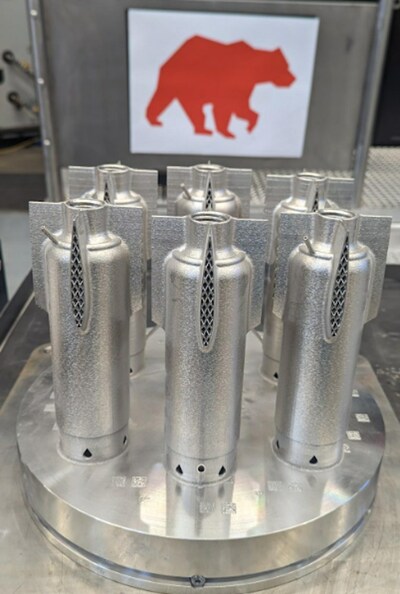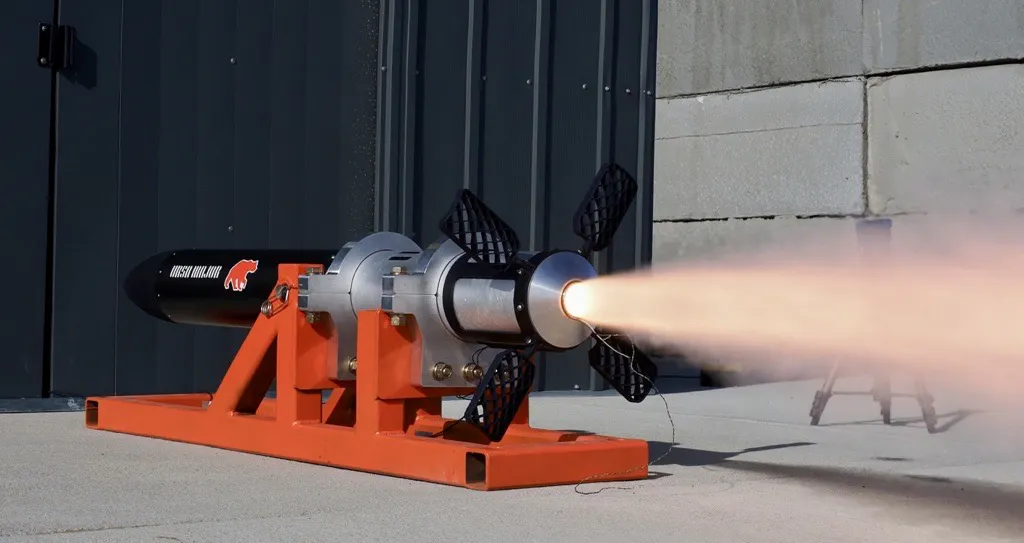Ursa Major, the Colorado-based company dedicated to building a North American rocket propulsion supply chain with advanced manufacturing, has become one of the first recipients of funding from the DoD’s Office of Strategic Capital (OSC), an agency established in December 2022 to provide loans and investments to domestic critical technology industries. Via the deal, OSC and the US Navy will contribute $12.5 million to accelerate the technical maturity of Ursa Major’s Lynx solid rocket motor (SRM) design, with Ursa Major matching the government’s contribution for a total investment of $25 million.
Ursa Major first announced the Lynx SRM about a year ago, since which time both the Lynx and SRMs generally have consistently attracted more and more attention from DoD. Additive manufacturing (AM) has been central to that trajectory, with both newcomers like Ursa Major and primes like Northrop Grumman turning to both powder bed fusion (PBF) and directed energy deposition (DED) to ramp up production of the increasingly scarce components.
In a press release, Dan Jablonsky, the CEO of Ursa Major, said, “We are proud to work with OSC on their mandate for expanding the defense industrial base by bringing new innovations into the DoD ecosystem. Ursa Major is revolutionizing manufacturing approaches used in propulsion development in the United States, building flexibility of production and scalability into manufacturing for our defense customers.”
The OSC has had difficulty finding its footing since its launch two years ago. However, the choice of an already-winning application like 3D printed SRMs as one of its first major projects could give the young agency some much-needed positive momentum for building on its mandate.
Further, this has been an especially difficult couple of years for a new agency within the federal government to try to get off of the ground, with the US Congress having even more trouble than usual coming to a consensus on budgetary issues. No matter who the next president is, the fact that the 2024 election is finally coming to an end may at least temporarily help determine the status of a host of spending projects currently in limbo.
That will be a necessary precondition for any further progress of advanced manufacturing generally and AM specifically, both in the defense industry and in all other strategic areas of the US economy. Even in a national security context, the significant delays in the Biden administration’s clean energy projects are just as big an issue as more explicitly security-related components like rocket motors.
On the other hand, a reversal of that stagnant state-of-affairs for an agency like OSC could be just the thing that demonstrates the US’s ability to adjust its approach to public-private partnerships in mid-course. Along these lines, at this point, the shifting nature of DoD spending is as important for setting a model for the rest of the US government, as it is for ensuring the future health of the DoD, alone.
Images courtesy of Ursa Major
Subscribe to Our Email Newsletter
Stay up-to-date on all the latest news from the 3D printing industry and receive information and offers from third party vendors.




